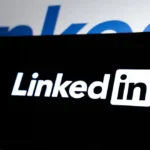Right, let’s talk about LinkedIn. We all know it’s the place for professional networking, job hunting, and sharing insightful articles. But have you considered its potential as a powerhouse for influencer marketing and strategic partnerships? Trust me, I’ve been down this rabbit hole, and the rewards are definitely worth it. I’m going to guide you through the same process that I went through, to help you to find similar success.
My initial thought was simple. Who has the biggest follower count in my industry? Easy, find them and get them to shout about us. It turned out this approach was not only flawed, it was downright dangerous. The followers of that user where from all over the world and had a very low level of engagement on his posts, so I scrapped that idea and started again.
So, I started exploring how to use LinkedIn for generating new business through influencer marketing and strategic partnerships, and it’s been a real eye-opener. It’s not just about finding someone with a massive following. It’s about finding the right fit – someone who genuinely aligns with your brand values, resonates with your target audience, and brings authentic engagement to the table.
Beyond the Numbers: Defining Your Ideal Influencer
Forget vanity metrics for a moment. Here’s my checklist of key characteristics I now look for in a LinkedIn influencer:
- Brand Value Alignment: Do their views and content align with your brand’s mission and values? This is non-negotiable. There needs to be a authentic alignment for it to work.
- Audience Demographics: Do their followers match your target audience? Are they in the right industry, job role, and geographic location? Use the basic analytics that LinkedIn provides on users profiles. This will at least give you a starting point.
- Content Relevance: Does their content consistently address topics relevant to your industry and your target audience’s needs? Scan their profiles and check that they are consistent in their messaging.
- Engagement Quality: Are their followers actively engaging with their content through comments, shares, and likes? Are the comments thoughtful and relevant, or are they generic platitudes?
- Authenticity: Do they come across as genuine and trustworthy? Look for a consistent voice and a history of building meaningful relationships with their audience. Remember, people will trust you based on who recommends you and their reputation.
Sniffing Out Fake Engagement: A Practical Guide
Inflated numbers are a real problem, so you’ve got to be diligent. Here’s how I assess genuine engagement:
- Comment Analysis: Read the comments! Are they generic, or do they show genuine interest and understanding of the content? Look for comments that ask questions, share insights, or spark further discussion. If they just use emojis, that’s a bad sign.
- Follower Analysis: Take a look at a sample of their followers’ profiles. Do they seem like real people with relevant professional backgrounds, or are they filled with empty profiles and generic job titles?
- Engagement Rate: Calculate their engagement rate (likes + comments + shares / follower count). A consistently low engagement rate compared to their follower count can be a red flag. This is available in Sales navigator and can be filtered by content type and other demographics.
- Consistency is King: Look for consistent engagement over time. A sudden spike in engagement without a clear explanation could indicate bot activity or paid promotion.
LinkedIn Sales Navigator: Your Secret Weapon
This is where things get seriously powerful. LinkedIn Sales Navigator isn’t just for sales professionals; it’s a goldmine for influencer discovery. Here’s how I use it:
- Advanced Filtering: Use the advanced search filters to target individuals based on industry, job title, company size, keywords, and more. This allows you to narrow down your search to the most relevant candidates.
- Lead Recommendations: Sales Navigator provides lead recommendations based on your search criteria and saved leads. This can uncover hidden gems you might have missed.
- Targeted Outreach: Craft personalised messages to potential influencers, highlighting your mutual interests and the potential benefits of a partnership. Make sure to reference their content and suggest some potential options for content creation. Be specific in what you are proposing, but remember to tailor the proposal to them.
Co-Creating Success: Engaging with Purpose
Once you’ve identified potential influencers, it’s time to start building relationships and co-creating content. This is where the real magic happens. Here are some ideas:
- Joint Webinars: Host a webinar together on a topic relevant to both your audiences. This allows you to share your expertise, reach a wider audience, and generate leads. Have a script available, but be prepared to go off it to generate great and insightful conversation.
- Co-Authored Articles: Collaborate on a blog post or LinkedIn article, sharing your unique perspectives and insights. This can boost your credibility and attract new prospects.
- Joint Campaigns: Partner on a marketing campaign, leveraging each other’s reach and expertise to promote your products or services. Make sure to agree clear objectives and stick to them.
- Thoughtful Engagement: Comment on their posts, share their articles, and actively participate in their online community. This shows that you value their contributions and are genuinely interested in building a relationship. This needs to be genuine though.
For instance, I collaborated with a well-respected thought leader in sustainable manufacturing on a series of LinkedIn articles. We co-authored posts on topics like circular economy and responsible supply chains, which generated significant engagement and attracted new prospects interested in our sustainable solutions. The key to success was understanding and engaging with their audience in a way that resonated with their values and interests.
Finding the right LinkedIn influencer for your brand is not a quick process. It requires careful research, diligent assessment, and a genuine commitment to building mutually beneficial relationships. By focusing on brand value alignment, audience demographics, engagement quality, and authenticity, you can unlock the power of LinkedIn influencer marketing and strategic partnerships to expand your network and attract new prospects. It’s about moving past the surface level to find the right fit for your organisation, and that, in turn, will pay dividends.











